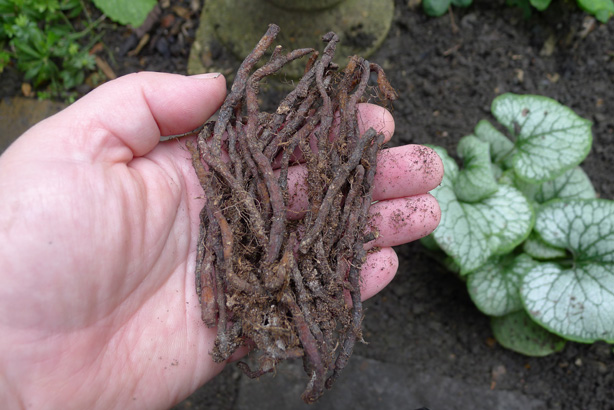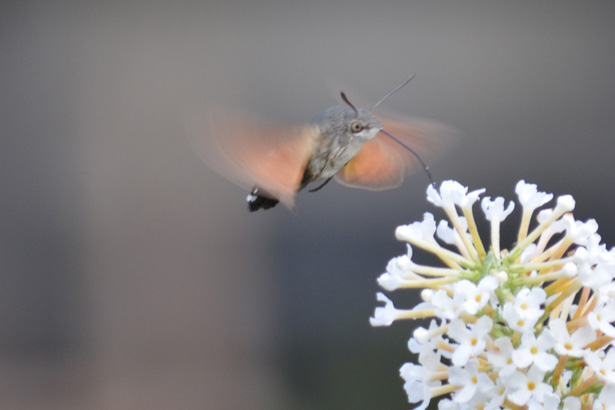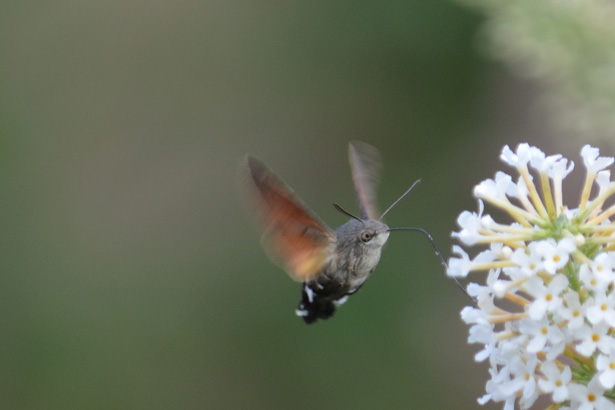
So our 2015 attempts to grow pumpkins at the bottom of the garden failed spectacularly (too wet and too much shade). Never mind - these tabi brought gourd cheer to our Christmas day.
Happy days! Tah Kwyjibo.

The bucketing rains and the great plague of slugs have proved too much for our tomatoes so they are not looking their best.
The Costoluto Genovese are delicious and have a rich, vibrant colour all the way through which looks good on the plate. Though we didn't get many on the vine, we would grow these again but probably not next year.
The Tigerella are nearly over, the plant was high yielding and no trouble at all. We're glad we tried them, they're good looking though their striping was more subtle than we anticipated. The fruit was tasty but not remarkably so, perhaps this was down to the amount of rain and their relatively small size.
We are finally picking the ♥ Zapotec Pleated ♥, the slugs love them however we love them more so we'll be growing them again next year. We love eating them in great doorstep slices, sprinkled with a little sea salt and cracked Kampot pepper. Next year we'll take the time to construct a trussed frame support, the fruit are heavy and the plant sprawling, our futile single cane supports snapped in the winds - a lesson learnt.

We found out about the Populuxe Seed Bank by listening to the inspirational What’cha Growin? Podcast Episode #4 Kelly Gilliam by Gayla Trail of You Grow Girl.
We followed Kelly, It Means Tomato, @xitomatl on Twitter. Her tweets prompted us to follow up on our curiosity about her selfless and proactive, forward-thinking policy of distributing free seed, of glorious, curious heritage varieties, to growers world-wide as strategy to ensure the cultivation, propagation and preservation of her heritage seed collection. This augments the work done by the volunteer growers who collect seed for the library to preserve and distribute. All Kelly requests in return is that the seeds be grown out and distributed amongst green-fingered friends and the stories of the seeds passed on. We received sufficient seed (and a ♥ hand-written letter ♥) to share with a handful of friends before we'd even begun. Be sure to give a donation as well as covering the postage cost, because the the project is self-funded.
You can also purchase seed from the Populuxe Etsy shop, all monies raised support the running of the seed bank.
They are having their pound of flesh... and more. 'Tis theirs and they will have it they say - despite the science. Why do we pay the subsidies?

With all the buzz about beekeeping, we were soon entertaining dreams of ourselves waddling down the garden path in beekeeping suits to sit the summer evenings out under our hive, listening to the sleepy hum of the girls settling in after a busy day out and about. (The added attraction of course of having an excuse to wear a suit with fencing veils is that it's the closest we'd ever get to wearing a spacesuit).
Our sweet dream soon soured when we discovered that in London the urban bee-keeping trend was putting further pressure on existing honeybees, solitary bees, bumblebees, butterflies and moths, hoverflies and beetles battling to keep their niche as beekeepers were not planting sufficient forage. Professor Francis Ratnieks and Dr Karin Alton from the Laboratory of Apiculture and Social Insects (LASI) at the University of Sussex advise" “Our calculations indicate that each new hive placed in London would need the equivalent of one hectare of borage, a plant that attracts mainly honey bees, or 8.3 hectares of lavender, a plant that attracts mainly bumblebees but some honey bees."
Resource: Rise in urban beekeeping in UK may have gone too far scientists warn, University of Sussex Last updated: Thursday, 15 August 2013 ‘To Bee or Not To Bee’, Professor Francis Ratnieks and Dr Karin Alton from the Laboratory of Apiculture and Social Insects (LASI) at the University of Sussex, The Biologist, vol 60 no 4 Aug/Sep 2013

This lead us to assess the diversity of nectar sources we provided for our existing plucky plot57b pollinators. We very quickly came to the conclusion that we need to grow MORE flowers, especially plants that bloom in very early spring or late winter.
As a quick fix we dodged rain squalls to plant a good number of bulbs to lay on a veritable floral buffet next Spring. Though 'The Knees' doth protest it was good to be head to head with the breathy overgrowth, tucking in little parcels of promise in pockets of moist earth. We felt as smug as squirrels, though we'll be sure to forget where we deposited things only for them to pop up and surprise us next year.

White Ermine moth, Spilosoma lubricipeda caterpillar

Great Green Bush-cricket nymph(?), Tettigonia viridissima

Despite being banned in the EU and the UK the Department for Environment, Food and Rural Affairs (DEFRA) decided to allow some farmers to use neonicotinoid insecticides this July. This will harm pollinators. Some biochemical companies are profiting from the destruction of our natural biodiversity and potentially undermining our food security.
Resources: Fears for bees as UK lifts insecticide ban, Daniel Cressey, Nature international weekly journal of science, 23 July 2015 Updated:24 July 2015Bees are a political issue, Natasha Little, July 31, 2015
The Bumblebee Conservation Trust
The bulbs we planted:

It is a known fact that our impenetrable garden fences are attributing to the decline of hedgehogs by limiting the amount of habitat available to hedgehogs to roam. This quick 20min project is a start to putting things right - get yer wellies on.
In response to the Hedgehog Street campaign by The British Hedgehog Conservation Society and the Peoples' Trust for Endangered Species We dug a hole (it only needs to be 13cm x 13cm, 5"x5", under each of the fences bounding our garden to link our garden with the neighbouring gardens*.

This hole has become a smeuse for the resident squirrels and blackbirds
We gardeners are implicated in safeguarding our native biodiversity. We cannot urge other nations to safeguard tigers, elephants, gorillas, orangutans, panda bears et al if we are not prepared to go the extra mile needed to save our own threatened species. We need to change our view of our gardens as dominion for our own designs and acknowledge that we are only short-term caretakers of habitats which should be shared with the species we are displacing.
The London Wildlife Trust's 2011 report, From green to grey; observed changes in garden vegetation structure in London,1998-2008, assessed among other aims the amount of garden in the boroughs of London available for supporting biodiversity (p5). Counting front and back gardens as separate plots it tallied 3.8 million individual private garden plots. It estimated the total land area of garden available is approximately 37,900 ha (p.10), or 24% of Greater London. 22,000 ha of this is covered in some form of vegetation which is equal to 75% of the total area of all designated Sites of Importance for Nature Conservation in London (p19). Imagine the wildlife wonderland we'd create if we gardened to create a continuous corridor of micro habitats to support insects, amphibians, reptiles and small mammals to move about as they need.
*We would LOVE to hear from any peeps in Walthamstow who have hedgehogs visiting their gardens. We did a hands-up survey of our gardening club members and we're sad to report that not 1 out of 30 has a hedgehog visiting their garden and or allotment.
References: Smith, C., Dawson, D., Archer, J., Davies, M., Frith, M., Hughes, E. and Massini, P., 2011. From green to grey; observed changes in garden vegetation structure in London, 1998-2008 , London Wildlife Trust, Greenspace Information for Greater London, and Greater London Authority. Published 2011, London Wildlife Trust. © London Wildlife Trust, Greenspace Information for Greater London, and Greater London Authority, available online 20 September 2015,

Our crawl of the internet for the optimum construction of a bumblebee nest returned this NERC article 'Bumblebee nest boxes don't work'. It reviews the dismal outcomes of a 4 year study on 6 different types of nest box by researchers from the University of Stirling and the Game and Wildlife Conservation Trust, where of the 736 nest boxes installed only 23 were occupied by bumblebees.
However as all gardeners will recognise, we are a people of hope, more often than not we garden with our finger's crossed. No matter how we rail against the indiscriminate randomness of elemental powers greater than our own, we have an indefatigable belief in the serendipity of nature as a constant. We cede to the slowness of garden-time, despite it passing concurrently with the contradictory rapid proliferation of weeds.
So, we were particularly delighted to read the numerous comments posted in addendum to the article which proved that contrarily bumblebees do make nests in man-made shelters in gardens. Gabriel Broaders from Devon posts that bumblebees are nesting in an upcycled fur-lined boot after a robin had nested in it the previous year. In fact many people attest to bumblebees nesting in disused bird boxes, perhaps because of a dearth of abandoned mice nests. We might remember to save the detritus when we clean out our bird box and use it in one of our bumblebee nests - of course we were going to build them ...and of course the bumblebees would come. Fingers crossed.We chose this construction method as it seems to mimic a disused mouse nest, the preferred home of a houseproud bumblebee. It was easy to purchase the materials, we were able to build three nests for under a tenner and our experience in obtaining the used hamster bedding was priceless. We concede it is a little less attractive than having an incidental post-artisanal megalopolitan-crofter curated rhubarb forcer knocking about perhaps, though there is the chance that once the plants get established around them they'll be more easy to pass off as "gardenalia-n". For this project you will need:

Using garden wire or chicken mesh make a grille to fit up inside the mouth of the pot. Make sure it has feet to lift it a good 25mm off the ground. The grille will keep the nesting material dry by lifting it above the soil.

The tubing curves which will cause condensation to pool, drill holes on the outside of the curve to allow it to drain.
This food grade silicon tubing can be bought by the meter on ebay, for those nearby ♥ W.P Wakefield Ltd.♥ (682 Lea Bridge Rd, London, E10 6AP)sell it - just look up when you enter the shop, there is a coil of it amongst the product suspended from the ceiling.

Trace the diameter of the upturned terracotta pot and dig a shallow pit, scour out a shallow trench to hold the tubing. Line the pit with pebbles. Position the grille (feet down) into the pit. Insert the tubing up through the grille to ensure the entrance way is firmly secured into the nest. We also supported the entrance at the far end of the tubing by propping it between pebbles before covering it over with soil. Make sure the drainage holes in the tubing are pointing down so that condensation will drain down into the soil.

Our local pet shop was happy to supply us with a handful of used hamster bedding; we took the strange looks we received from those earwigging our request to mean we were deemed eco-futurists, just a little out of sync. We didn't have very much to divide between the three nests we built but we reckon the odor de hamster Cuddles McGee is pretty pongiferous as the neighbourhood fox made a detour from its rounds to topple the saucers off all three nests last night.

We didn't have sufficient dry leaves to fill three pots so we used dry Sphagnum moss, here we may have made a mistake because the moss is specifically adapted with hyaline cells in its leaves that die on maturation to form receptacles for absorbing and retaining water from the atmosphere. In other words it acts as a sponge - we were hoping that it would wick condensation from the inner nest but it may well act just as effectively as a sink for all the rain we've been getting.

Line the pot with the nesting materials then up-end it onto the grille.

Place flat pebbles on the pot before balancing the saucer on top, this allows air to circulate and the saucer prevents rain getting into the nest.

We're holding thumbs and crossing our fingers and toes.
The Bumblebee Conservation Trust
The Bumblebee Conservation Trust
References:T. Jones, Bumblebee nest boxes don't work, 13 January 2014,NERC Science of the Environment, Available online 13 September 2015Gillian C. Lye, Kirsty J. Park, John M. CHolland and Dave Goulson, Assessing the efficacy of artificial domiciles for bumblebees, Journal for Nature Conservation, Available online 21 April 2011, doi:10.1016/j.jnc.2010.11.001

Watching live badgers in the wild is on our bucket list so we booked to see them from the Kew Wakehurst hide. It being a bit of a drive from Walthamstow and a weekday evening we decided to make a day of it. This meant we finally got to visit Kew Wakehurst and what a wonder it is. We were enthralled from the moment we walked through the entrance and stopped in awe to delight at the carpet of cyclamen under the grand oak trees - we'd not seen them in such profusion before.


Another ecstatic first for us was spotting this Humming-bird Hawk-moth, Macroglossum stellatarum, which we watched, for a good 20min, flitting around the buddleia until it was satiated.




We had a good walk to Westwood lake where we admired brimstone butterflies and dragonflies on the reedbed and spotted the very glimpse of a kingfisher (our first sighting for the UK) as we strolled around the far end of the lake. The mallards stopped their gobbling of the blackberries to ogle us eating our lunch.


Whiling away the last light 'til sundown - sadly this was the closest we got to seeing "a badger". The badgers were a no-show. Hey ho.

We were very much inspired by reading George Monbiot's (@GeorgeMonbiot) 'Feral', it has reinforced our ideas about optimising our London garden for wildlife and we have realised we've got to put more effort into creating diverse micro habitats.
We already encounter numerous toads and newts when out and about so we decided to build a hibernaculum to enhance their garden experience.
Admittedly we were secretly dreaming of enticing in slow worms and adders. However, since our garden is mostly in shade all year round (its east-facing and slopes away from the house, with a neighbouring 3 storey house one one side and asbo Leylandii on the other, not to mention the 28ft pear tree)this is a safe, city pipe dream.

A bufo bufo we had to translocate before digging commenced. Their natural reaction is to hunker down, dead still which is why they are not very good at getting themselves out of the way of strimmers. Our garden backs onto an allotment and we despair March and August when the fields come alive with the sound of ye infernal strimmers.

The hole is two spades deep.



Now you see it ...now you don't, we purposely positioned the hibernaculum so that it is screened by ferns. After covering the heap with a good layer of soil we planted it with sweet woodruff, we hope this will in future create an insulating and moisture retaining 'green roof'.


Oh joy, the abundance of this tiny garden we spotted aboard this canal boat 'Special Memories' on our walk past Stonebridge Lock to a litter pick organised by the Canal & River Trust. Kudos to the green-fingered gardener.